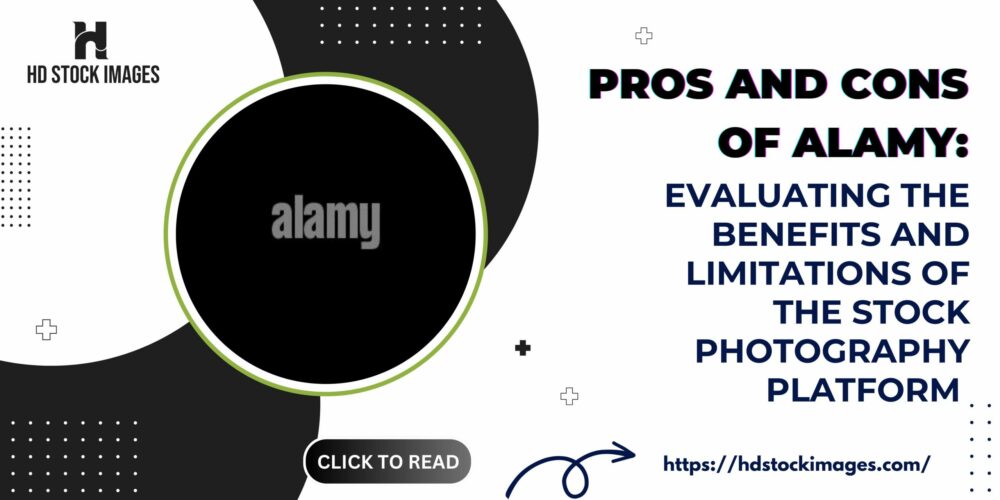Alamy serves as a valuable resource for various industries and uses cases, offering a wide range of images suitable for different purposes. Let's explore some common use cases and industry applications where
Alamy proves beneficial:a) Advertising and marketing
Alamy provides a vast collection of high-quality images that can enhance advertising and marketing campaigns. Whether it's creating eye-catching visuals for social media ads, website banners, or printed materials like brochures or billboards, the diverse image library enables businesses to find relevant and impactful visuals to engage their target audience.
b) Publishing and media
Publishers, journalists, and media professionals can leverage
Alamy's extensive image collection for articles, blogs, magazines, newspapers, and book covers. The platform's diverse range of images allows them to find compelling visuals that complement their written content, enhancing the overall reader experience and visual storytelling.
c) Web design and development
Alamy's high-resolution images are valuable assets for web designers and developers. They can integrate captivating visuals into website layouts, landing pages, blog posts, and online portfolios to create visually appealing and engaging user experiences.
Alamy's wide range of image styles and genres caters to various design aesthetics and website themes.
d) E-commerce and product presentations
For businesses operating in the e-commerce industry,
Alamy offers product photography and lifestyle images that can be used to showcase products on websites and online marketplaces. High-quality visuals significantly impact the perception of products, helping to attract potential customers and boost sales.
e) Educational materials and presentations
Alamy's image library can be a valuable resource for educators and trainers. From creating visually appealing presentations and educational materials to engaging students with relevant visuals,
Alamy's diverse content supports effective teaching and learning experiences.
f) Creative projects and personal use
Alamy's extensive collection of images caters to individuals working on creative projects, such as graphic designers, artists, and hobbyists. The platform provides inspiration and access to visuals that can be used in artwork, digital collages, personal websites, and social media posts.These are just a few examples of how
Alamy can be applied across different industries and use cases. The platform's wide-ranging image collection and licensing options make it versatile and adaptable to diverse creative needs.
4. Alternatives to Alamy
While
Alamy offers a comprehensive range of features and benefits, it's always beneficial to explore alternative stock photography platforms to ensure the best fit for your specific needs. Here are two notable alternatives to consider:
Shutterstock:
- Extensive image library with millions of high-quality visuals, including photos, illustrations, and vectors.
- Flexible licensing options and competitive pricing plans.
- Advanced search filters, a user-friendly interface, and a robust contributor community.
- Additional resources like video footage, music tracks, and customizable design templates.
Adobe Stock:
- Integrated stock content service that seamlessly integrates with Adobe Creative Cloud applications.
- Vast collection of high-quality images, illustrations, videos, and templates.
- Direct access and licensing within Adobe design tools.
- Extensive customization options and a range of licensing plans.
When
evaluating alternatives to Alamy, consider factors such as image requirements, licensing options, pricing structures, ease of use, and compatibility with your existing workflows. Both
Shutterstock and Adobe Stock offer unique advantages and can be reliable alternatives depending on your preferences and requirements.
Exploring multiple platforms and comparing their features and offerings will help you make an informed decision that aligns with your creative vision and budget.
5. Limitations of Alamy
Alamy, despite its advantages, has some drawbacks. These include higher pricing, non-exclusive images, and potential user experience challenges that could impact its usability for certain users.
a) Pricing considerations
- Higher prices compared to other platforms: Alamy's pricing structure may be a deterrent for some users. The cost of images on Alamy tends to be higher compared to other stock photography platforms. This could pose challenges for individuals or businesses with limited budgets or those seeking more affordable options.
- Potential budget constraints for users: The higher pricing on Alamy may limit access to certain users or restrict their ability to purchase images in large quantities. This can be a drawback for individuals or businesses looking for cost-effective solutions or requiring a high volume of images for their projects.
b) Non-exclusive images
- Non-exclusive nature of Alamy's images: Alamy allows photographers to sell their images on multiple platforms, resulting in a non-exclusive image collection. While this provides a wider selection for users, it may reduce the exclusivity of certain images. This could impact the uniqueness and differentiation of visuals used by individuals or businesses.
- Implications for image uniqueness and competition: As the same images are available on multiple platforms, there is a possibility of encountering the same visuals used by others. This can limit the ability to create a distinctive visual identity and increase the risk of seeing similar images used by competitors or other entities in the market.
c) User experience challenges
- Potential issues with search functionality: Some users have reported limitations or difficulties with the search feature on Alamy. The platform's search algorithm may not always deliver the desired results accurately or efficiently. This can lead to frustration and time wasted in finding specific images or narrowing down the selection based on desired criteria.
- User feedback on platform usability: Feedback from users suggests that the user interface and overall user experience on Alamy could be improved. This includes aspects such as navigation, image categorization, and ease of use. These challenges may require users to invest additional time and effort in navigating the platform effectively.
By considering these limitations, users can make informed decisions when using
Alamy for their stock photography needs. It is important to evaluate individual requirements and weigh the benefits and limitations of the platform against other alternatives to ensure the best fit for specific projects or budgetary constraints.
FAQS
1. What is Alamy?Answer: Alamy is a stock photography platform that offers a vast collection of high-quality images for creative professionals to use in various projects.2. How does Alamy work?Answer: Alamy works by connecting photographers and image buyers. Photographers upload their images to the platform, which are then made available for licensing to individuals and businesses seeking stock photos.3. What types of images are available on Alamy?Answer: Alamy offers a wide range of images, including photos, illustrations, and vectors, covering various themes and subjects such as nature, people, travel, and more.4. Can I use images from Alamy for commercial purposes?Answer: Yes, Alamy provides licensing options for commercial use of its images. The licensing terms and prices may vary based on factors such as image size, usage rights, and intended audience.5. How do I search for images on Alamy?Answer: Users can search for images on Alamy by using keywords, filters, and advanced search options to find specific types of images or browse through different categories.6. Are there any restrictions on using images from Alamy?Answer: While Alamy provides licensed images, there may still be certain restrictions on their usage. It is essential to review the specific licensing terms and agreements for each image to ensure compliance with any restrictions.7. Can I contribute my own images to Alamy?Answer: Yes, Alamy allows photographers and artists to contribute their images to the platform. However, there are specific quality guidelines and contributor agreements that need to be followed.8. What are the pricing options on Alamy?Answer: Alamy offers competitive pricing options based on the image's size and intended use. Prices may vary depending on factors such as resolution, licensing rights, and the size of the intended audience.9. Can I get a refund for an image I purchased on Alamy?Answer: Alamy has a refund policy that allows for refunds in certain cases. However, it is important to review their refund policy and contact their customer support for any specific inquiries.10. Can I use Alamy images without purchasing a license?Answer: No, using images from Alamy without the appropriate license or permission would be a violation of copyright law. Users are required to purchase the appropriate license for the images they wish to use.
Conclusion
Alamy is a stock photography platform with several benefits and limitations. Its vast collection of high-quality images and easy-to-use interface make it a valuable resource for creative professionals. Additionally, its flexible licensing options and competitive pricing are advantageous.However, Alamy's stringent image quality requirements and complex contributor agreements may deter some photographers. Furthermore, its search functionality can be improved to enhance user experience. Despite its limitations, Alamy remains a popular choice for accessing diverse and professional stock images.


 admin
admin








